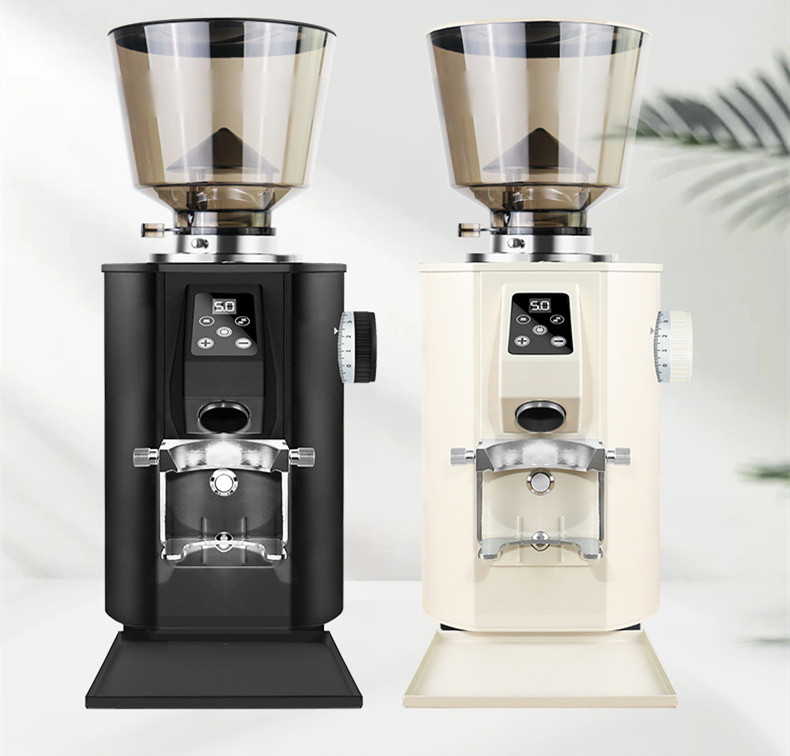Reducing Coffee Production Costs Through Strategic Grinding Practices
Optimizing Grind Size to Minimize Bean Wastage
Choosing the right grind size for each brewing method is key to reducing unnecessary bean consumption. Finer grinds, such as those used for espresso, extract flavor more efficiently but can lead to over-extraction if not calibrated correctly, resulting in bitter, undrinkable shots that waste coffee. Conversely, overly coarse grinds for methods like French press may leave under-extracted, weak coffee, prompting users to grind more beans to compensate. By matching grind size precisely to the brewing technique—medium for drip coffee, fine for espresso, and coarse for cold brew—baristas ensure maximum extraction per gram of coffee. This precision minimizes the need for re-brewing or adjusting doses, directly lowering bean usage and cost.
Adjusting Grind Settings for Different Roast Levels
Darker roasts are more soluble than lighter roasts due to their extended exposure to heat during roasting. This means they extract faster and require a coarser grind to avoid over-extraction. Using a fine grind with dark roasts can lead to bitter, harsh flavors, forcing baristas to discard shots and grind additional beans. Lighter roasts, being denser and less soluble, need a finer grind to extract balanced flavors. Misaligning grind size with roast level wastes beans and increases costs. By calibrating grinders based on roast profiles, cafes can ensure each batch extracts optimally, reducing the need for corrective measures and preserving inventory.
Implementing Dose Control to Avoid Overuse
Even with the correct grind size, inconsistent dosing—the amount of coffee ground per serving—can inflate costs. Over-dosing, common when baristas estimate quantities by eye, leads to excessive bean consumption and uneven extraction. For example, a standard espresso shot typically requires 18–20 grams of coffee; using 22 grams instead wastes 10–20% more beans per shot without improving quality. Using a grinder with a built-in scale or calibrating manual dosing to precise weights ensures consistency. This practice prevents overuse while maintaining flavor balance, directly cutting costs over time.
Extending Equipment Lifespan Through Proper Grinding Techniques
Grinders are a significant investment, and their maintenance directly impacts long-term costs. Dull or misaligned burrs, for instance, produce inconsistent particle sizes, forcing baristas to grind more coffee to achieve desired extraction. This inefficiency not only wastes beans but also accelerates burr wear, requiring premature replacement. Regular cleaning to remove oil buildup and residual grounds prevents clogging, which can strain the motor and reduce grinding efficiency. By maintaining optimal burr sharpness and motor function, cafes avoid costly repairs or replacements, ensuring their equipment operates efficiently for longer.
Calibrating Grinders for Even Particle Distribution
Uneven grind particles—a mix of fine and coarse grounds—reduce extraction efficiency, as water flows through larger particles faster than smaller ones. This inconsistency often leads to under-extracted coffee, prompting baristas to grind more beans to compensate. To prevent this, grinders should be calibrated to produce uniform particles. Techniques like adjusting burr spacing or using conical burrs (which naturally create more even grinds) can improve consistency. Even particle distribution ensures that every gram of coffee contributes to flavor extraction, reducing waste and lowering per-cup costs.
Reducing Energy Consumption with Efficient Grinding
Grinders consume electricity, and inefficient models or practices can drive up utility bills. For example, grinding coffee too finely requires more energy, as the burrs must work harder to break down beans into smaller particles. Similarly, overfilling the hopper or grinding in large batches can strain the motor, increasing energy use. By grinding only what’s needed for immediate use and avoiding excessive fineness, cafes can reduce energy consumption. Additionally, choosing grinders with automatic shut-off features or energy-efficient motors further lowers operational costs without sacrificing performance.
Streamlining Workflows to Cut Labor and Time Costs
Labor is one of the most significant expenses in coffee production. Inefficient grinding workflows—such as manual dosing, frequent adjustments, or cleaning delays—increase the time baristas spend on each task, raising labor costs. Automating dose control or using grinders with programmable settings reduces the need for constant supervision, allowing staff to focus on other high-value activities like customer service or quality control. Simplifying processes like hopper refilling or burr cleaning also minimizes downtime, ensuring grinders operate at peak efficiency without requiring excessive staff input.
Training Staff on Cost-Saving Grinding Practices
Human error accounts for a substantial portion of coffee wastage. For instance, baristas may grind coffee too finely out of habit, even when a coarser setting would suffice for a specific brewing method. Incorrect grind adjustments can also lead to inconsistent shots, requiring re-brewing and additional bean usage. Regular training sessions on grind calibration, dose control, and equipment maintenance empower staff to make cost-conscious decisions. Hands-on practice with different roasts and brewing methods helps them develop an intuitive understanding of how grinding affects costs, fostering a culture of efficiency.
Integrating Inventory Management with Grinding Practices
Poor inventory management often leads to overstocking or understocking beans, both of which increase costs. Overstocking raises storage expenses and risks spoilage, especially for freshly roasted coffee, which loses flavor over time. Understocking may force cafes to use suboptimal beans or adjust grind settings hastily, compromising quality and efficiency. By aligning grinding practices with inventory rotation—using older beans first and adjusting grind sizes based on freshness—cafes can minimize waste and ensure consistent quality. This approach also reduces the need for emergency purchases at higher prices, stabilizing long-term costs.
By focusing on grind precision, equipment maintenance, and workflow efficiency, cafes can significantly lower coffee production costs without sacrificing quality. These strategies address both direct expenses like bean usage and indirect costs like labor and energy, creating a sustainable, cost-effective operation.


